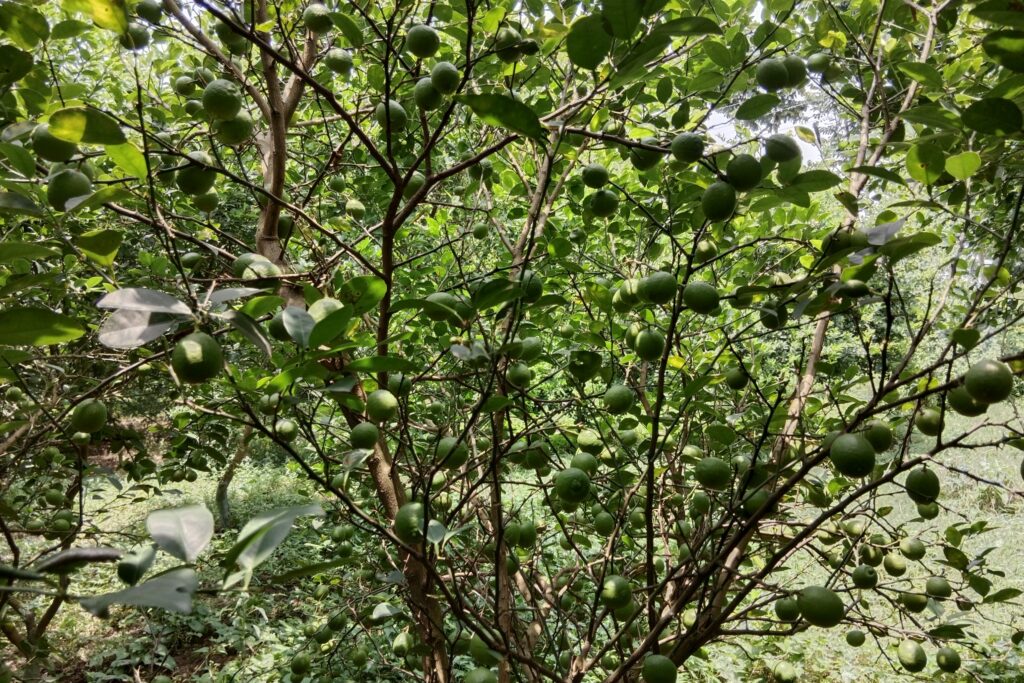What is Bakanae Disease of Rice?
The term “Bakanae” is derived from Japanese, meaning “foolish seedling,” and the Bakanae disease of rice is distributed worldwide. It is both a seed-borne and soil-borne disease.

The rice (Oryza sativa L.) disease known as “foolish seedling,” or Bakanae disease of rice, is spread generally by seeds. Grain yield can significantly reduce when infected plants die or produce empty panicles. Fusarium fujikuroi, a fungus that causes sterility and significant yield loss in rice cultivation, is the main cause of this disease.
Fusarium fujikuroi isolates are highly pathogenic and known to produce gibberellic acid (GA3), causing the characteristic abnormal elongation symptoms of Bakanae disease of rice. The pathogen enhances the production of secondary metabolites and gibberellic acid (GA), which leads to these symptoms. Infected plants exhibit morphological and color abnormalities such as elongation, stunting, a large angle between the leaf and stem, and yellowish-green leaves.
Rice foot rot, another name for Bakanae disease of rice, caused by Fusarium fujikuroi, has become a significant obstacle in rice cultivation, particularly for basmati rice. The pathogen can survive up to 26 months when stored at 10°C and 40% relative humidity, hampering seed germination and causing grain discoloration.
fujikuroi-infected plants exhibit varying symptoms depending on environmental factors and the level of soil moisture, which affects the production of gibberellin and fusaric acid. These compounds are associated with either elongation or stunting of the diseased rice plants. The ratio of gibberellic acid to fusaric acid determines the extent of rice plant elongation.
Bakanae disease of rice has emerged as an increasing problem for rice, especially aromatic cultivars. The incidence of this disease has risen steadily, with reported yield losses ranging from 15-25%. The disease is most frequent when infested seeds, covered in fungal spores, are used but can also occur when the pathogen is present on plant material or in the soil. It spreads through wind or water carrying fungal spores from one plant to another and can also be transmitted during farm operations such as harvesting infected plants, which allows spores to spread to healthy seeds, and soaking seeds in contaminated water.
Nitrogen application can increase the incidence of Bakanae disease.
Causes of Bakanae Disease
Fusarium fujikuroi is the primary fungal pathogen responsible for Bakanae disease of rice. This fungus is always a threat since it can live in water, soil, and diseased plant debris. It spreads by wind, tainted seeds, and irrigation water. High humidity and temperatures between 25°C and 35°C are the perfect conditions for the fungus to grow and infect rice crops.
Compared to plants in water fields, diseased plants in dry fields die more quickly.
Symptoms of Bakanae Disease
Bakanae disease of rice predominantly affects various parts of the rice plant, including the roots, crowns, stems, leaf sheaths, and panicles, persisting throughout the growing season. Initial symptoms of the disease typically manifest in the nursery bed before transplanting to the field.

Symptoms in Nursery
Infected seedlings in nursery fields are often distinguished by their tall stature and yellowish appearance. Affected seedlings tend to be taller, and slender, and exhibit slight chlorosis, with their color ranging from yellowish green to pale in advanced stages. Additionally, abnormal elongation of primary leaves is observed in these seedlings within nursery fields.

Symptoms of Bakanae Disease of Rice in the Field
- The most common symptoms: are yellowing and excessive elongation of infected plants.
- Symptoms were observed in both nurseries and fields from a distance.
- Initial appearance: slight yellowing, weak, abnormally elongated plants that grow faster over time.
- Bakanae-infected fields are uneven throughout the growing season.
- Development of adventitious roots from lower nodes of culms.
- Infected seedlings: taller with chlorotic stems and leaves, turning yellowish green to pale later.
- Diseased plants: yellowish-green elevated flag leaves with more horizontal orientation.
- Rapid disease buildup, causing uneven fields throughout the season.
- They were observed in both nursery beds and fields from a distance.
- Affects all parts of the plant: roots, crowns, stems, leaf sheaths, and panicles.
- Infected plants may die during growth; survivors have tall, thin, lanky tillers with white, empty chaffy panicles.
Host Range
The pathogen responsible for bakanae affects not only rice but also other crops and weeds. According to Carter et al., water grass plants exhibiting typical bakanae symptoms were collected from fields, and isolates of F. fujikuroi from water grass and barnyard grass produced bakanae symptoms on rice. They suggested that many monocotyledonous weeds in California rice fields should be evaluated as potential hosts of the bakanae pathogen in future studies.
In 2009, bakanae symptoms were observed in barnyard grass in a Korean paddy field. Fusarium species were isolated from the infected barnyard grass stem and identified as F. fujikuroi. Pathogenicity tests showed that both barnyard grass and rice exhibited virulence when artificially inoculated. The timing of spore formation on barnyard grass coincided with the rice heading stage, indicating that barnyard grass can significantly contribute to the transmission of bakanae in rice. This underscores the importance of controlling gramineous weeds for effective bakanae management.
How Bakanae Disease Spreads?
Bakanae disease of rice spreads primarily through contaminated rice seeds, which carry the Fusarium fujikuroi pathogen on their surface or within. Soil infested with spores can infect new crops planted in the same area, while irrigation water can transport spores from infected plants or soil to healthy ones. The disease also spreads via airborne spores, crop residue, and weeds or other crops that act as alternate hosts. Effective management includes using certified disease-free seeds, crop rotation, careful water management, and controlling gramineous weeds to minimize the pathogen’s presence and spread.
Management
Preventive Measures
- The most efficient method for bakanae disease management is seed treatment with: Carbendazim @ 2.0 g/kg or Carbendazim + Thiram (1:1) @ 2.5 g/kg seed.
- Worldwide, seed treatment with fungicides is a key disease management strategy.
- Effective control has been achieved by soaking seeds in 0.3% sodium hypochlorite solution for two hours, then draining and soaking in fresh water, reducing inoculum load by 80-90%.
- Nursery dip treatment with Benlate is highly effective.
- Seedling treatment with Carbendazim or Benlate (0.1%) for 6-8 hours significantly reduced disease incidence by up to 92%.
Control Method
- Spray hexaconazole at a concentration of 2 ml per liter of water. Apply 2-3 sprays at 7-day intervals.
FAQs
Q1. Why is bakanae called foolish seedling?
Bakanae disease of rice is called “foolish seedling” due to its characteristic symptom of abnormal elongation in infected rice plants. This excessive growth makes the plants appear taller and spindly compared to healthy ones, giving them a deceptive appearance of vigor. However, these “foolishly” tall seedlings are actually weak, prone to lodging, and less productive, often failing to produce viable grain. The term “bakanae” itself is derived from the Japanese words “baka,” meaning foolish, and “nae,” meaning seedling, aptly describing the misleading growth pattern caused by the Fusarium fujikuroi pathogen.
Q2. What hormone causes bakanae disease?
Bakanae disease of rice is primarily caused by the hormone gibberellic acid, which is produced in excess by the Fusarium fujikuroi pathogen. This plant hormone, which naturally regulates growth and development, leads to abnormal elongation of rice plants when overproduced. The excessive gibberellic acid disrupts normal cell division and elongation processes, causing the characteristic symptoms of tall, spindly, and weak seedlings. This abnormal growth depletes the plant’s resources, making it more susceptible to environmental stress and less productive. Thus, the overproduction of gibberellic acid by the pathogen is the key factor in the development of bakanae disease.
Q3. Which PGR was discovered in connection with bakanae disease of rice?
Gibberellins, a group of plant growth regulators (PGRs), were discovered in connection with the bakanae disease of rice. The disease, caused by the fungus Fusarium fujikuroi, leads to the overproduction of gibberellic acid, one type of gibberellin. This discovery was pivotal in understanding the role of gibberellins in plant growth. The excessive production of gibberellic acid by the pathogen causes infected rice plants to exhibit abnormal elongation, making them appear taller but weaker. The identification of gibberellins through studies of bakanae disease highlighted their significant influence on plant development and growth regulation.


